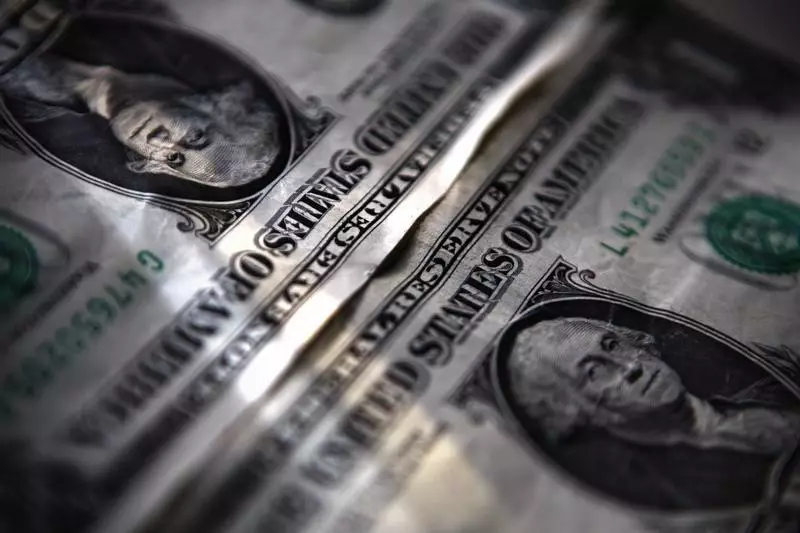As the U.S. dollar experiences a notable retreat, the financial landscape reflects deeper undercurrents of political uncertainty and imminent monetary policy shifts. The interplay between these factors not only influences the dollar’s value but also sets the stage for significant volatility in global markets.
The backdrop of uncertainty surrounding the upcoming U.S. presidential election plays a pivotal role in the dollar’s performance. On the eve of a highly publicized election where Republican candidate Donald Trump competes against Democratic challenger Kamala Harris, market players are holding their breath. Recent polls suggest that Harris holds a slight edge, with particular traction among female voters, which has introduced a level of optimism into her camp.
Analysts at ING note that the market has begun to recalibrate its expectations surrounding Trump’s policies. Historically, his stance on issues like immigration and tax adjustments has been seen as inflationary. Should he win the election, such policies could lead to increased inflation, higher bond yields, and, consequently, a strengthened dollar. However, with the election just around the corner, the possibility of abrupt fluctuations in currency values is heightened, indicating that traders are treading carefully as they weigh the potential outcomes.
Adding another layer of complexity, the Federal Reserve’s anticipated cut in interest rates—scheduled for announcement later this week—further complicates the currency’s trajectory. Following a substantial reduction in September, which saw a 50-basis point cut, forecasts predict a more modest 25-basis point decrease. This shift, if realized, would traditionally be perceived as bearish for the dollar.
Interestingly, recent data from the labor market shows a significant slowdown in job creation, partially attributable to external factors such as weather-related disruptions. Despite this, the Fed’s decision-making process remains focused squarely on broader economic indicators and not merely on short-term fluctuations. ING speculates that the ultimate impact of the Fed’s rate adjustment on the dollar will likely only become clear once the electoral dust settles.
In the broader context of forex trading, the dollar’s recent decline has prompted a corresponding rise in several key currency pairs. The euro, for instance, appreciated against the dollar, climbing to 1.0892. This increase can be linked to both the dollar’s weakness and encouraging economic data emanating from the eurozone. The eurozone manufacturing sector, while still contracting, displayed signs of improvement with a rise in the PMI index. This could signify underlying strength, allowing market participants to reassess previous predictions regarding European Central Bank (ECB) actions.
Markets are grappling with balancing acts of predicting potential ECB rate cuts against their recent data indicating growth. If Trump were to secure a re-election victory, it could trigger expectations for further easing from the ECB, especially given the specter of trade policy uncertainties that are likely to accompany his administration.
Across the Atlantic, the British pound also witnessed an uptick against the dollar, rising to 1.2963. This movement comes on the heels of the Labour government’s recent budget announcement, which has been regarded as inflationary yet pro-growth. As the Bank of England prepares to convene, all eyes will be on their commentary regarding the recent fiscal strategies and potential subsequent interest rate adjustments.
Conversely, the Japanese yen found a slight boost from the dollar’s weakness and a more hawkish stance from the Bank of Japan. This dynamic hints at an ongoing recalibration of monetary policy in response to shifting global economic conditions, further driven by the anticipated re-election scenario in the U.S.
The U.S. dollar’s retreat amid political uncertainty and shifting monetary policy reflects a complex web of influences at play. As markets prepare for potential volatility surrounding the U.S. election, the reactions of global currencies further illustrate the interconnectedness of these economies. The upcoming days will be pivotal in determining how political outcomes and interest rate decisions shape the international fiscal landscape moving forward. Active engagement from traders and investors will be essential in navigating these unpredictable waters.


Leave a Reply